Kitchen Vessels
Some of the ceramic and glass artifacts recovered in this feature represent containers commonly used in the kitchen for the preparation and storage of food.
Redware Pan
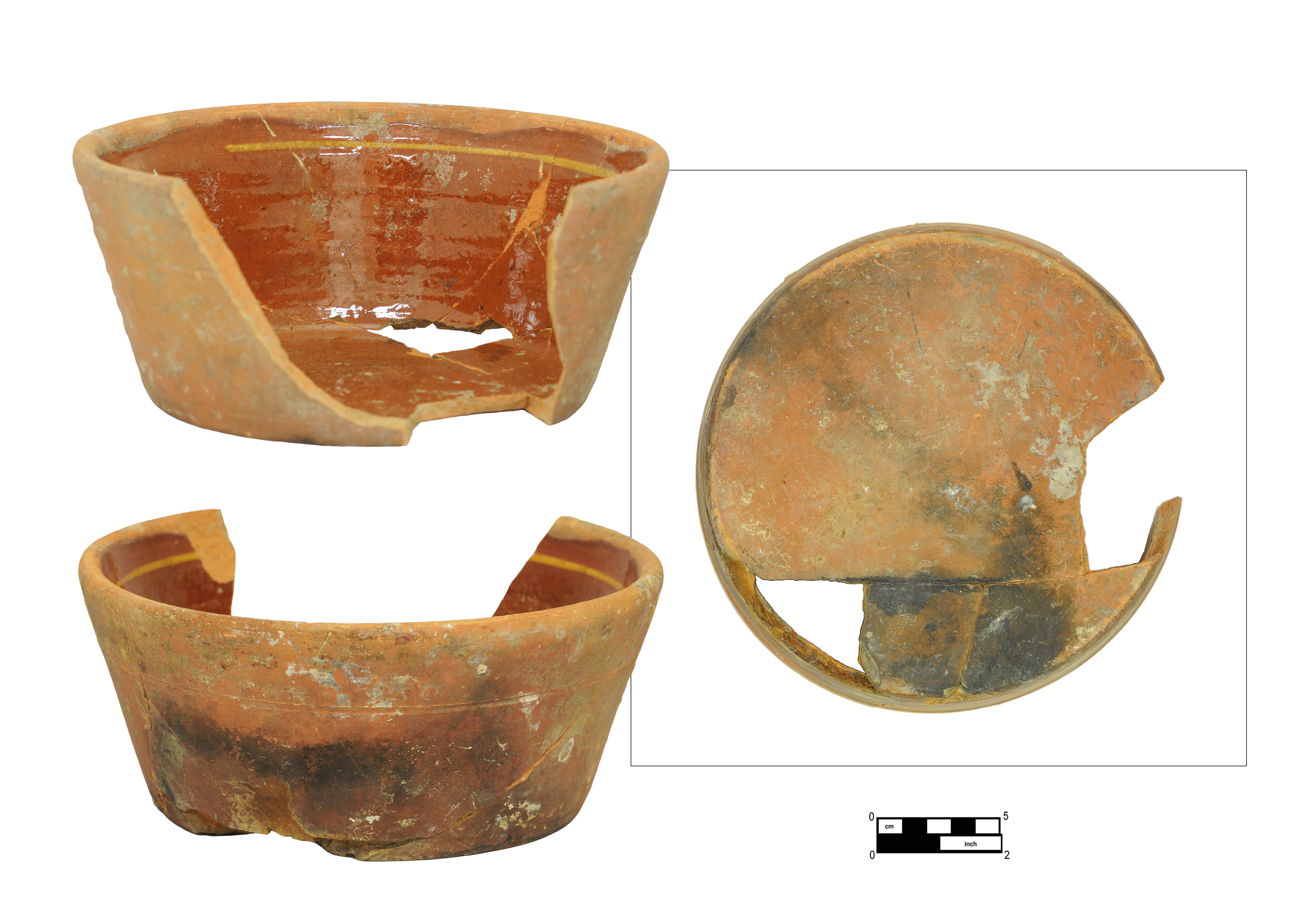
This nearly complete redware pan has patches of charring on the exterior body and base, possibly from use as a baking dish or to rewarm food (height 4.5 inches, rim 10 inches, base 7.5 inches) (C- 0550). “Though less durable than stoneware or cast iron, redware found a place in the kitchen, particularly in baking where such vessels retained an even heat throughout to facilitate the preparation of cakes and pies.” 1 The interior surface of this vessel is lead glazed, with a single ring of white slip applied in a straight line about 0.75 of an inch below the rim. The upper portion of the rim is slightly thinner on the interior surface to the level of the slip band, which creates a very slight ledge—a feature that is often more prominent on redware pans from other parts of the project.
Redware Milk Pan
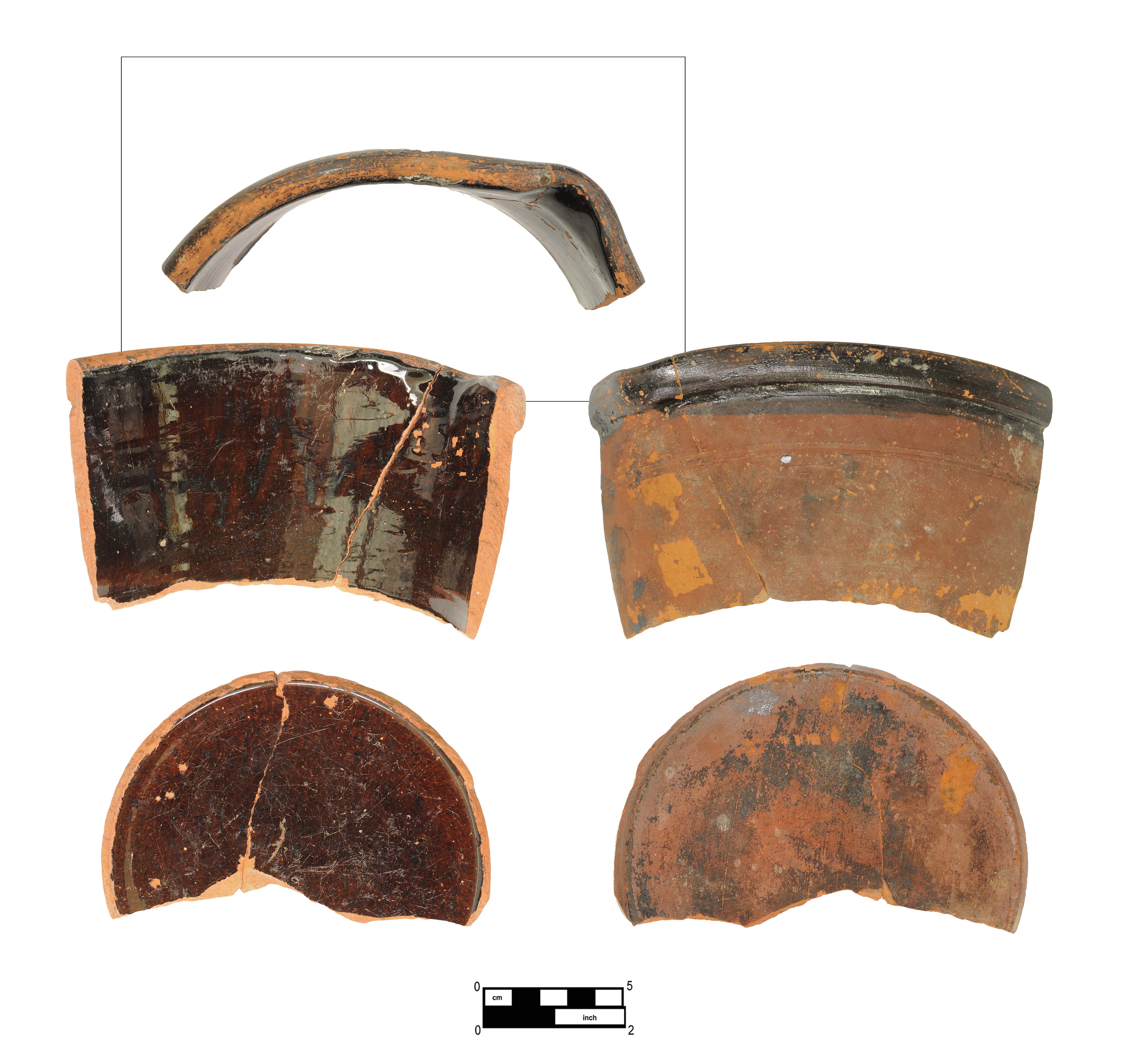
A second vessel of smaller dimension also resembles a pan (rim 8 inches, base 6 inches) (C-0564). This pot has a dark brown glaze on the interior surface and features a pinched pouring lip similar to that found on milk pans—the vessels used to contain fresh milk while allowing the cream to rise. 2 The base of this pan has patchy overall charring consistent with use near a hearth, on a stove, or in an oven.
Redware Pitcher
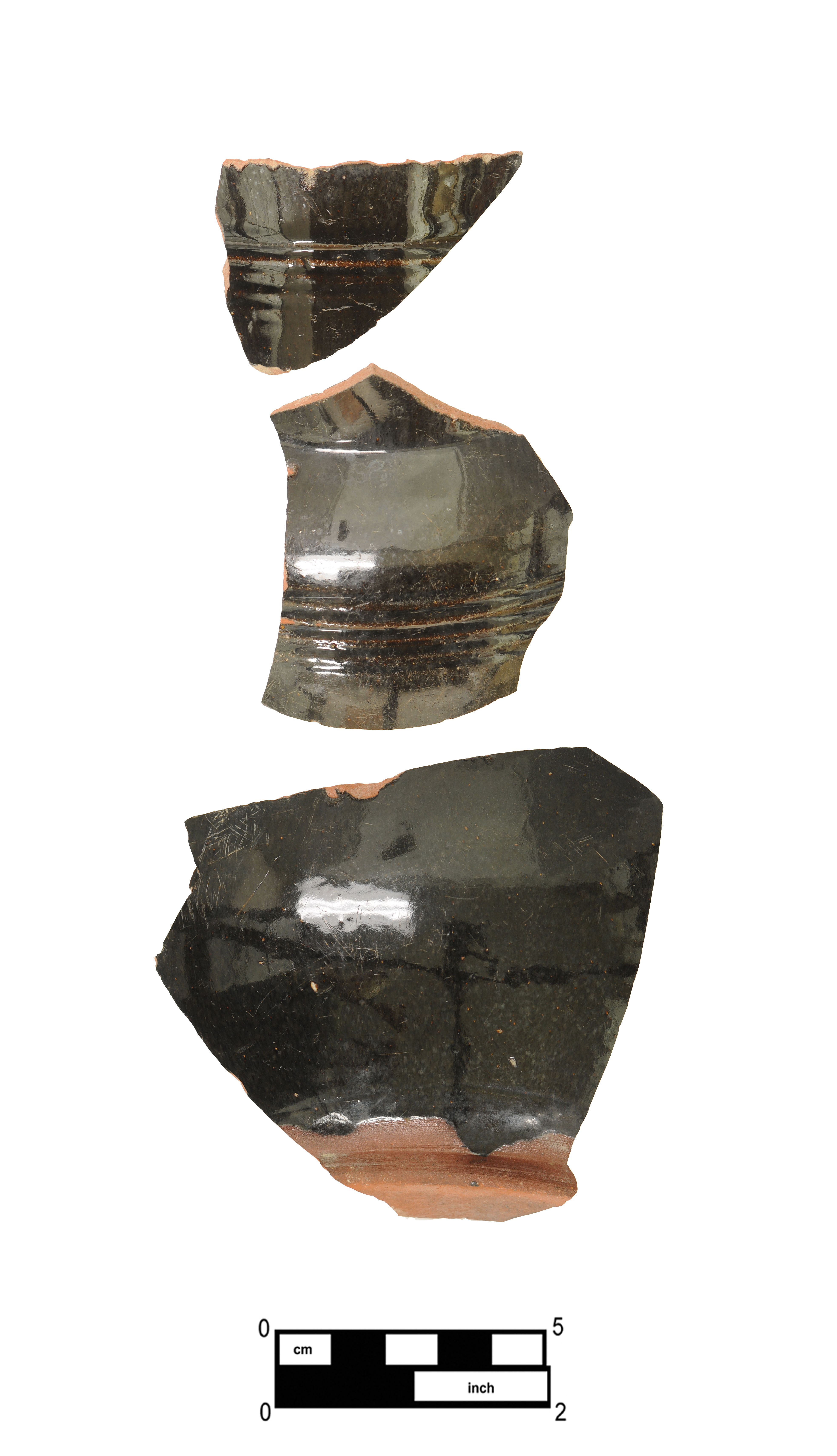
Several of the recovered fragments are pieces of the same black glazed redware pitcher (Cat # 8.56.33, 8.58.21). One large section is part of the lower body and tooled foot. The exterior surface of the base was left unglazed and the outer edge shows a ring-shaped area of moderate to heavy wear. The rim and shoulder sherds both feature a band of tooled ridges, referred to as reeding. Redware pitchers were useful in the kitchen for storing water or other liquids used in cooking and baking.
Redware Jars
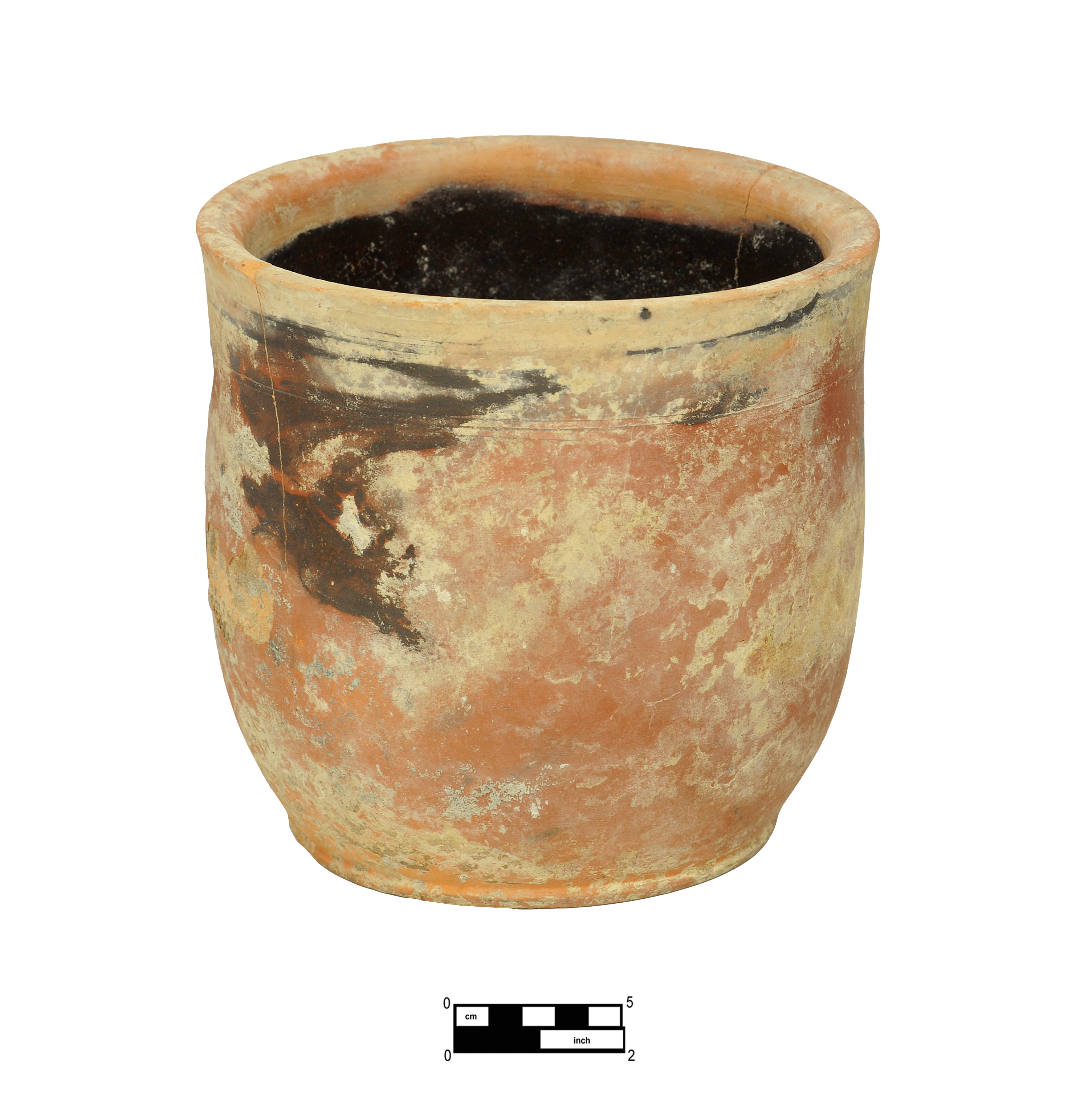
This single complete jar is covered on the interior surface with brown manganese glaze (C-0673). The jar has a height of 7.5 inches, with a base diameter of 5.75 inches. As a result of a flaw during manufacture, the rim is “out of round” and exhibits an oval shape measuring 7.5 x 8 inches. There are small patches of unintentional glaze on the exterior; one resembles partial finger prints of the potter and probably occurred during glazing of the interior of the jar. The edge of the rim flares slightly and, in combination with a narrow groove on the upper body, provides a means to secure a cover over the contents. Oiled paper or prepared animal bladders were sometimes tied over the top of jars for storage.
A section of rim and body represents a second, larger storage jar of a similar shape (C-0559). The rim measures about 10.5 inches in diameter, and features the same slight flare at the top and groove on the body as the more complete example described above.
Glass Storage Jars
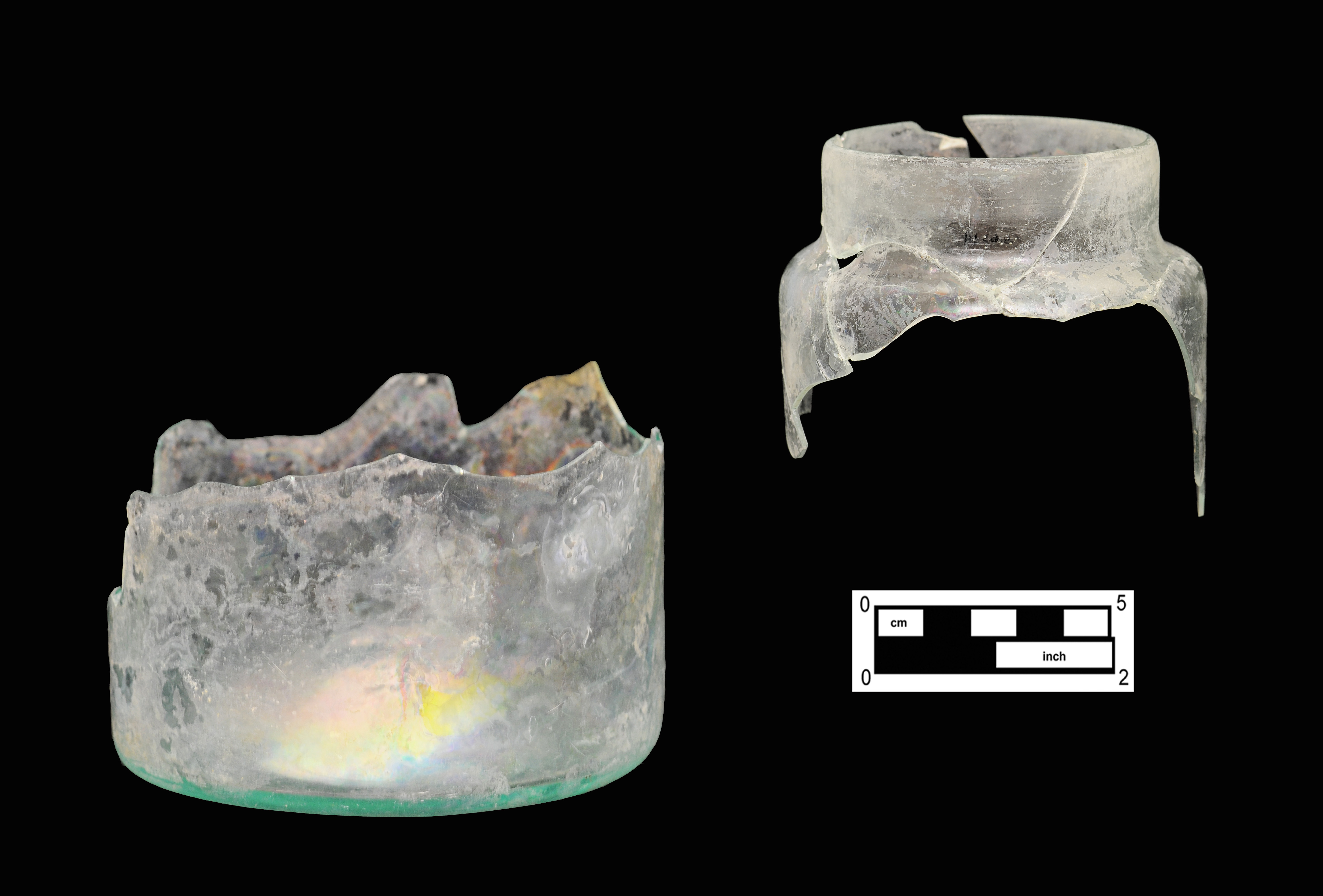
AECOM recovered portions of two glass storage jars of a cylindrical form. This shape was common to redware and stoneware containers used for food storage. These jars were probably the product of one of the local Philadelphia or southern New Jersey glassworks. Dr. Thomas W. Dyott of Philadelphia advertised similar containers as “pickling and preserving jars,” in sizes from a half pint to one gallon. These jars were available with “strait and turned over tops.” 3 The complete rim and portions of the shoulder of a small jar were identified (Cat # 8.61.14). The straight rim measures 2.75 inches in diameter, with a height just under an inch. This straight rim may have been covered with a tin cap, wide cork, or some type of wax seal. Portions of a lower body and base represent a second jar (G-0968). This jar measures 4.75 inches in diameter and was slightly pushed at the center, with the remains of a pontil scar evident.
Additional Redware
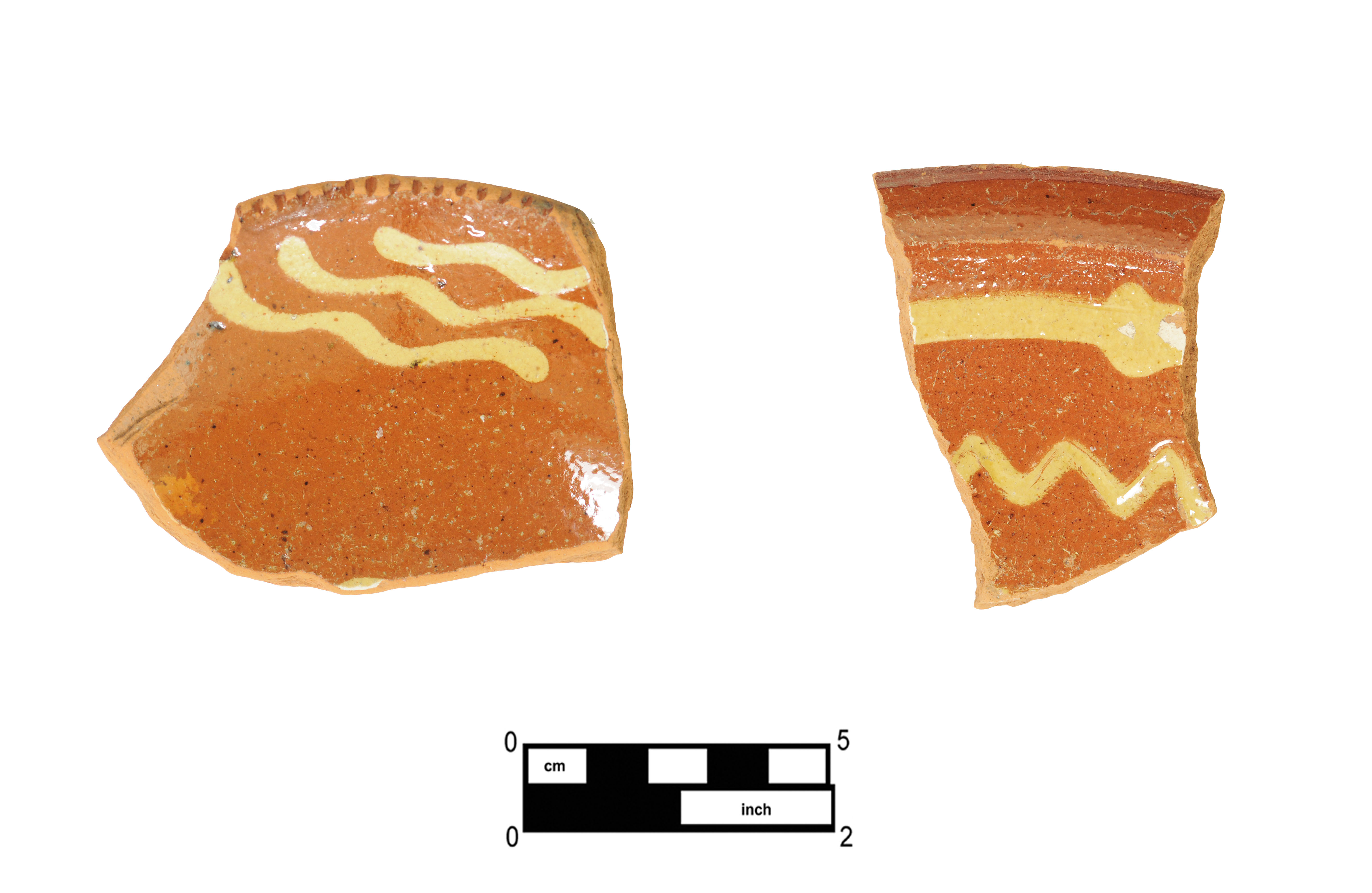
Two additional slip-decorated redware vessels were identified based on rim fragments (Cat # 8.47.7 and 8.47.8). A shallow redware dish or plate shows a portion of the interior decoration, consisting of three short wavy slip lines just below the coggled rim. A small quartz pebble fragment was trapped in the clay as the piece was being formed and is visible along the top edge of the rim. While the interior surface has very little evidence of cut marks or scratches indicating use, the top of the rim across the coggling shows a moderate amount of wear. The other rim comes from a pan or deep dish distinguished by a short everted rim. The interior body is decorated with one straight and one wavy white slip band beneath the clear lead glaze. These two vessels were probably also used for food storage or serving.
Salad Dressing/Vegetable Oil Bottle
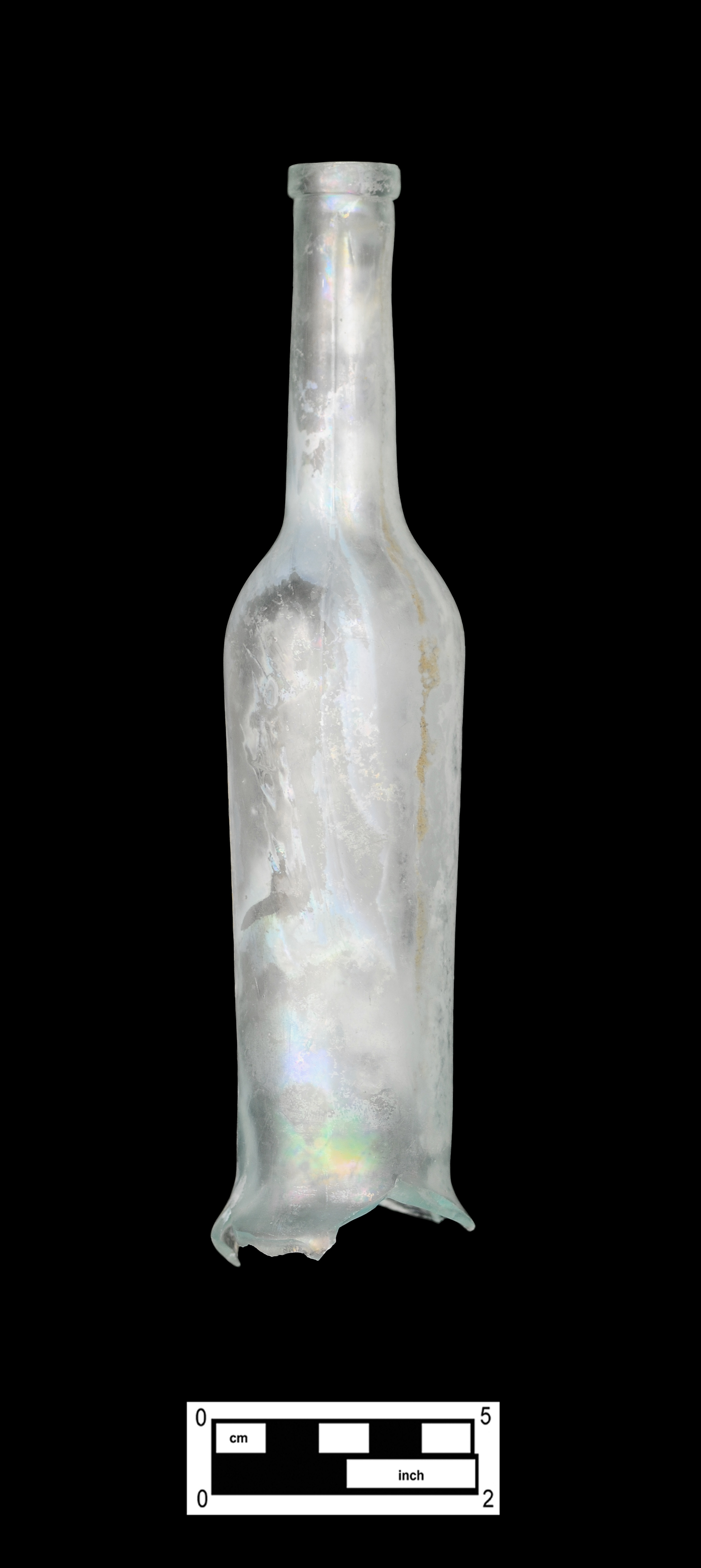
A single aqua salad dressing or vegetable oil bottle (G-0850) was recovered from Feature 5. The tall slender form of this bottle, most commonly associated with olive oil, is characterized by a relatively long, straight neck that is almost as tall as the body, and a uniquely flared heel, or “bell bottom.” Mouth-blown examples of this bottle form are most frequently seen from the 1880s to the 1910s, and were variously referred to by early-twentieth-century bottle makers as “Italian Oil” 4 or “Eclipse Oil” (Illinois Glass Company 1906: 206). 5 The Feature 5 bottle likely pre-dates the late nineteenth and early twentieth centuries by a good bit, however. The absence of air-venting marks and the applied “patent,” or “extract,” finish on this bottle date it no later than the mid to late 1880s, though given the overall crudeness of the bottle—especially in the neck—and its context in Feature 5, this bottle was probably made in the 1850s.
References
- William C. Ketchum, Jr., American Redware (New York, NY: Henry Holt and Company, 1991), 22. ↩
- Ketchum, American Redware, 28. ↩
- Helen McKearin, Bottles, Flasks and Dr. Dyott (New York, NY: Crown Publishers, Inc., 1970), 36. ↩
- Watson M. Lohmann, Whitney Glass Works Illustrated Catalog and Price List with Historical Notes 1900–1918 (Pitman, NJ: Published by author, 1972). ↩
- 1906 Illustrated Catalogue and Price List, Illinois Glass Company, Manufacturers of Bottles and Glass Containers of Every Kind (Alton, IL: Illinois Glass Company, 1906) 206. ↩